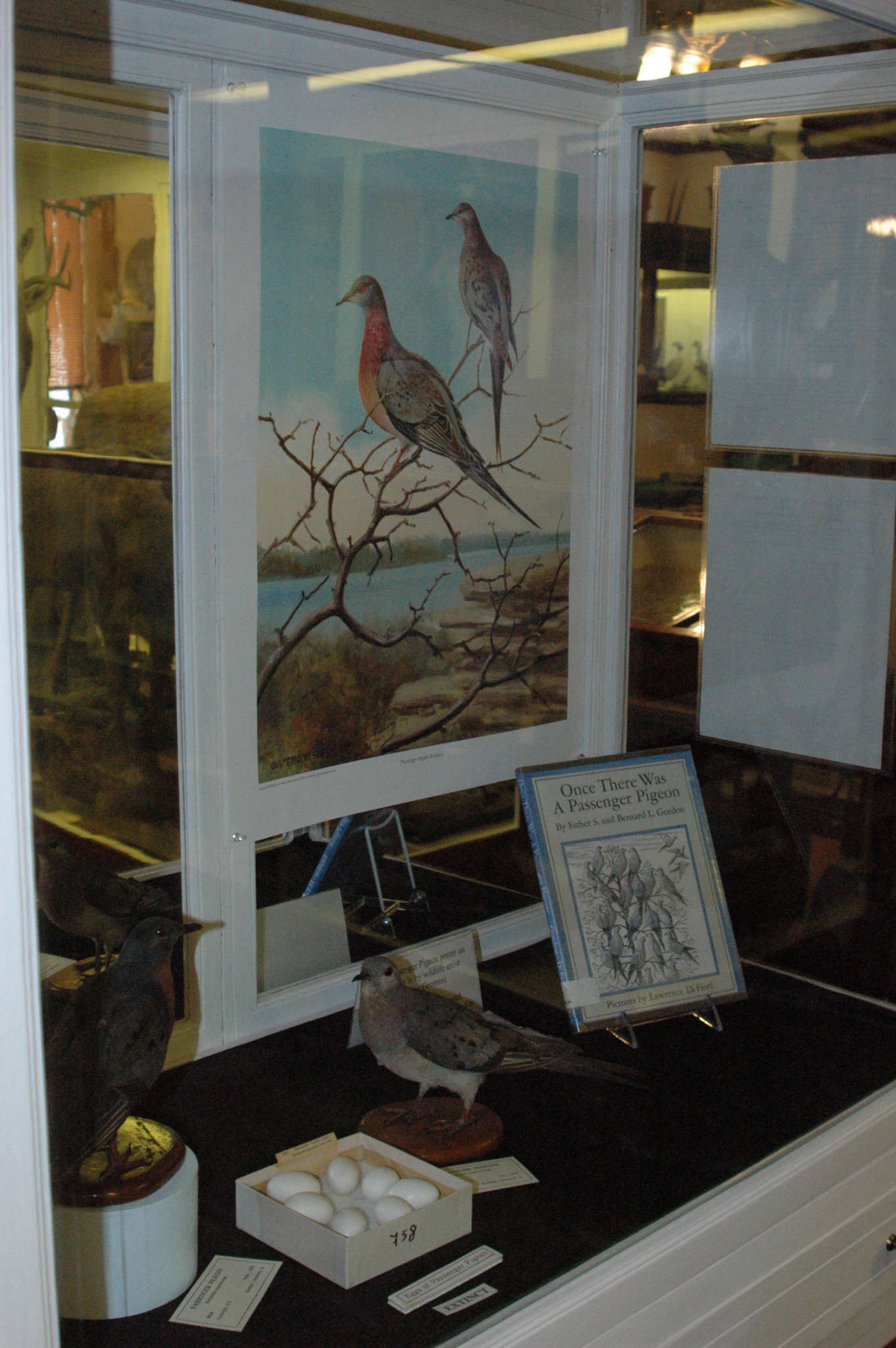A new exhibit that acknowledges the 100th anniversary of one of the darkest moments in American natural history, the extinction of the passenger pigeon, is currently on display at the Pember Museum.
The museum has created a special exhibit to showcase the pigeon, which was declared extinct in 1914. The exhibit includes two specimens of the bird—one male and one female—as well as a half dozen eggs and some informative displays about the species.
Bernadette Hoffman, museum educator, said the exhibit is meant to be a tribute to the bird as well as a reminder of the affect humans can have on the world around them.
“Not only are we remembering this lost species, but we hope to remind people what can happen when we are careless and give little regard to nature,” Hoffman said.
The passenger pigeon at one time was widely considered to be the most numerous bird in the world. It was once so abundant and traveled in such large numbers—a flock in 1866 in southern Ontario was described as a mile wide and 300 miles long—that it often darkened the sky as they flew overhead. Population estimates in the 19th century ranged from 1 to 4 billion birds.
“The pigeon numbered in the billons and went extinct in less than 50 years,” Hoffman said.
The extinction of the pigeon had two major causes: loss of habitat and commercial exploitation of the bird for meat.
Because the bird traveled in such large flocks, it was very easy to hunt and its meat was commercialized as inexpensive source of food. According to Joel Greenberg, a naturalist and author of “A Feathered River Across the Sky,” hunting, at least initially, didn’t have a huge affect on the bird’s numbers; the bird was important source of food for many Native Americans. But that changed after the introduction of refrigerated boxcars in the 1870s. Refrigeration enabled hunters to take large numbers of the bird without fear of the meat spoiling. This coincided with increase in logging, which led to deforestation and eradication of the bird’s habitat.
By the mid-1890s the bird had almost completely disappeared. The last wild pigeon was captured near Detroit in September of 1908 and the last pigeon in captivity, Martha, died on Sept. 1, 1914 at the Cincinnati Zoo in Ohio. Her body was sent to the Smithsonian Institute where it remains today.
Hoffman said the Pember has three passenger pigeon specimens in its collection; the two currently in display and a third currently on loan to the Adirondack Museum. Franklin Pember, founder of the museum and a naturalist collected his specimens in August 1863, October 1874 and September 1878, the latter two collected at the height of the species’ decline.The exhibit can be viewed from 1 to 5 p.m. Tuesday through Friday and 10 a.m. to 5 p.m. on Saturdays . The museum will also be open on Monday, Sept. 1, in honor of Martha.




